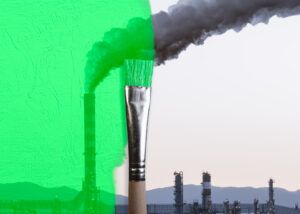As the global economy ground to a halt, the environment experienced a moment of respite. However, despite the slowdown in greenhouse gas emissions caused by Covid-19, climate change manifestations are set to rise, with fires in California the latest devastating example.
While societal awareness of climate change is increasing, the willingness of capital markets to address and price these risks appears lacklustre. We are nevertheless beginning to see signs of progress, with markets increasingly integrating both transition risks and opportunities.
Is this all too little too late? And what could a Democrat win in the upcoming US elections mean in terms of setting a new green agenda? Below, we assess whether the physical manifestations of climate change are starting to result in concrete steps being taken to address this issue.
A raft of record temperatures is a clear indication that climate change is escalating
The UK was not alone in experiencing a record stretch of elevated temperatures this summer. In the US, the highest temperature ever reliably recorded, 54.4°C, was reached in Death Valley National Park. This has been accompanied by severe heat waves across other states, which resulted in rolling grid shutdowns across California as electricity demand surged. Ironically, this was principally a function of air conditioning demand. Temperatures across the Middle East have also been extraordinary, while recent elevated temperatures in the Russian Artic remain highly concerning, particularly as they exceed previously modelled worst-case scenarios.
See also: – Global warming set to wipe at least 10% from GDP
Of course, record temperatures are not the only physical manifestation of climate change. Much of the globe is struggling with issues ranging from drought, likely to cause stunted crops and an increase in wildfires, to heavy rains, which tend to trigger floods and landslides. In July, excessive rainfall in Japan led to the country’s highest rain-related death toll in more than three decades.
Have we already reached the point of no return?
It was hard to miss stark headlines that the Greenland ice sheet has melted beyond the point of no return. This is significant, as if the Greenland Ice Sheet melts, scientists estimate that the sea level will rise by about six meters. Fortunately, the reality of the analysis these headlines referenced, a recent paper by King et al., is somewhat more nuanced. While there has certainly been an increase in the rate of solid ice discharge into the ocean, this is not indicative of passing the point of no return.
However, ice sheets and cover are in retreat. The extent of Arctic sea ice, averaged for July 2020, was the lowest ever recorded by satellite for a month of July – about 2.19 million square kilometres below the 1981-2010 July average, and beating the previous record low of 2019. We have not yet passed the point of no return, but it is clearly on the horizon.
A narrowed climate sensitivity range rules out lower scenarios
As we edge closer to the point of no return, the exact nature of the future we face is becoming clearer. For 40 years, climate scientists have predicted a double atmospheric carbon dioxide (CO2) from preindustrial levels would result in a global warming of between 1.5°C and 4.5°C – something we could expect within the next 60-80 years. A major study by the World Climate Research Programme has recently determined a more precise range of temperature outcomes.
The study supports a likely warming range of between 2.6°C and 3.9°C. This means the higher scenarios, of 4.0°C plus, are now less likely to happen but, conversely, the lower sensitivity scenarios, sub 2.0°C, have also been largely ruled out. Indeed, a doubling of CO2 all but guarantees warming of more than 2°C. If we are now likely heading for an increase in excess of 2.0°C, physical manifestations of climate change will become more severe and common.
Is the tide of climate awareness turning?
The material decline in the oil price over the course of the first half of 2020 appears to have catalysed a long overdue acknowledgement of a ‘new normal’ in fossil fuel pricing.
This has led to a raft of impairments across the fossil fuel complex, with Carbon Tracker estimating the total impairments at $87bn. For example, as BP lowered the long-term oil and gas price assumptions used in its financial statements, this resulted in impairments of between £13bn and £17.5bn – equivalent to 13-17% of 2019 net assets.
We believe transition-related impairments could extend well beyond the fossil-fuel-extraction industry. Indeed, we have seen a rise in the number of junk-rated bonds in the energy complex held by financial institutions, raising the spectre of greater provisioning requirement for banks.
This is why it is so crucial that capital markets link carbon accounting with financial accounting. Investors and stakeholders ought to be demanding carbon risks be reflected in financial institutions’ financial statements
It has been encouraging to see very positive developments in the adoption of the Partnership for Carbon Accounting Framework. Morgan Stanley, Bank of America, Investec and Natwest have all joined the partnership, which provides a framework for measuring and disclosing greenhouse gas emissions associated with the investment activities of financial institutions. Not only will the broader adoption of this framework allow institutions to monitor and reduce their exposure and risk, it will also allow investors visibility into an increasingly material set of risks over which they currently have extremely limited visibility. However, we are not going to disclose our way out of the crisis – climate risks need to be priced in.
What would a Democrat win mean for climate change?
The appointment of Kamala Harris as Joe Biden’s VP candidate has bolstered the Democrats’ climate change credentials. Harris has had a progressive and aggressive track record on climate change action, while House Democrats have recently unveiled a detailed decarbonisation plan for the country.
Even if Joe Biden wins the presidency, the Democrats need both the Senate and Congress to enact material policy change, meaning that US policy hangs on the outcomes of the presidential and congressional elections. The Democrats’ plan calls for a cut to net US greenhouse gas emissions by 37% below 2010 levels in 2030, and 88% below 2010 levels in 2050. The proposal recommends a clean energy standard for net-zero electricity by 2040 and net-zero new buildings by 2030. It also calls for only zero-emitting new vehicles to be sold by 2035 and advocates for doubling funding for public transit. This is an ambitious plan that would see the US become a green leader.
How green America goes will depend on the results of November’s election; a Biden win would be positive for climate action, and even more so if there is a Democrat sweep. Conversely, a Trump win is likely to stall reform, in keeping with his promise to protect the fossil fuel industry. However, with the cost of renewable energy falling sharply, and usage projected to rise, the economics of renewables are powerful even than rhetoric.








